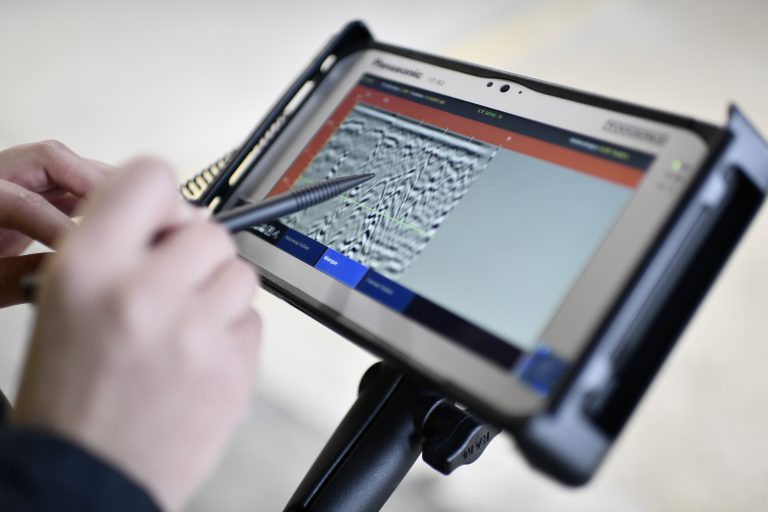

In the French subsoil, there are hundreds of thousands of kilometres of gas transmission and distribution pipelines. These buried pipelines are not immune to incidents caused by external actions, drilling or pulling-up during public works, for example. Keeping control over the integrity of networks is a major challenge and the first condition for this is to know their locations perfectly.
|A very wide variety of networks|Fine mapping in augmented realityThe issue is such that the government has taken up the subject: Article R554-22 of the Environment Code has been amended to beef up the requirement for network operators to know precisely the location of their pipelines. Since 2019, they have been required to be able to locate on a map at least one third of their networks, to within 40 cm. RICE's mission: to give our customers, carriers and distributors first and foremost the means to gain exact knowledge of their networks to ensure their integrity. To do this, our researchers are developing, among other things, solutions and services for detecting buried pipes.|Here, the main difficulty lies in the age of certain sections and in the variety of materials in the pipelines. Sections may be cast iron, copper, steel or polymer, with very different operating conditions. All of this makes operation considerably more complex. Network detection can be a tedious task when the exact composition of a pipeline is not precisely known. Moreover, since the detectors are, for the most part, intended for a single material, it takes a multitude of different models to cover the entire network. Our laboratories help us to impartially assess the quality and detection performance of the detectors. The only information available is from the manufacturers, so we prefer to get our own idea of the performance of these detectors. In doing so, we often find that there may be a gap between the assertions on the technical sheets and the actual performance. As part of their work, our researchers strive to design simpler, more efficient and more versatile technological solutions. RICE initiates, or joins, collaborative projects, whether within the framework of the European Gas Research Group (GERG), or with other partners, notably the United States. In practical terms, we are working on the development of a so-called "multi-frequency" detector. Today, there are different electromagnetic markers for locating pipes, and each brand of detector has its own markers. The downside is that these markers all have a given frequency. RICE has teamed up with its U.S. counterparts, NYSearch, PG and E, as well as GRDF and GRTgaz, to develop a universal detector.|At the same time, we are also working with French SMEs on a project called GeoBot, which should make it possible to accurately identify the geographical position of distribution pipes by inserting a robot inside the pipes. This geo-referencing is the other key way to reduce the risks associated with third-party work. At present, we have maps that are supposed to record the position of the pipes. When digging for their work, contractors refer to these maps to find out where the network is located. However, human errors are possible and the network may not always be perfectly located on the map. RICE is therefore working on a complete solution, which will allow to see the network in augmented reality on a tablet. No more human errors, no more misinterpretations, more reactivity for less risk of collision. This tablet will bring together known cartographic data and correlate it with data from various detectors capable of locating polymer, steel and cast iron pipes. It will thus make it possible to visualize the entire network in real time. An operator who wants to dig next to our customers' pipes will be able to do so, without risk, knowing exactly where the pipe is located. RICE is the only R&D&I centre to have a test area for testing its prototypes that includes all the soils and pipes present in the field. This means that our solutions are immediately put to the test in the field and development is accelerated.||https://ri.natrangroupe.com/wp-content/uploads/2019/12/GRTgaz-P200931.jpg||||||||||